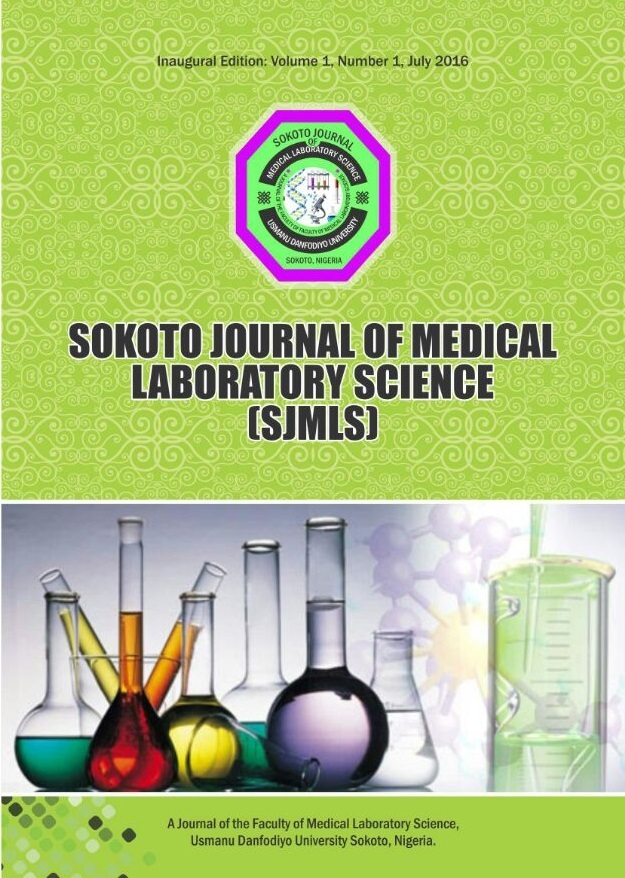Exposure Assessment and Antioxidant Vitamin Levels among Cosmetologists and Heavy Cosmetic Users in Benin City, South-South Nigeria
Keywords:
Exposure Assessment, Antioxidant Vitamins, Cosmetologists, Toxic metals, Occupational exposure.Abstract
Beauty enhancement is well craved after among people of the Black race. Most toxic contents of cosmetics and makeups are intentionally undisclosed by manufacturers. Occupationally exposed persons and heavy cosmetics users may be exposed to cosmetics-borne chemicals, including toxic metals. Readily available antioxidants; vitamins A, C and E may hold some promise of mitigation and protection. This study therefore aimed to determine the blood levels of toxic metals and antioxidant vitamins among cosmetologists and heavy cosmetic users in Benin City, South-South, Nigeria. The cosmetologists (n=50; mean age, 25.4 years) comprised of female nail and hair care workers who have had occupational exposure for a minimum of three years, and the heavy cosmetic users (HCU) comprised of apparently healthy females (n=25; mean age, 23.7 years) who had frequently used a variety of cosmetics for a minimum of three years; while apparently healthy, age-matched, and cosmetics-naive female participants (CNP) (n=25, mean age 20.0 years) served as controls. Exposure assessment was carried out using a structured and validated questionnaire. From blood samples obtained, toxic metals: Lead, Arsenic, Mercury, Chromium and Cadmium were determined using the inductively coupled plasma mass spectrometry while vitamins A, C and E levels in serum were determined spectrophotometrically. Results showed that the frequency of exposure among the cosmetologists was ≥ 6 hours/day; ≥6 days/week while the route of exposure for the cosmetologists included the hands. In addition, similar routes were observed among HCU which included dermal contact, nasal cavity, eyes, oral cavity and the environment. The level of awareness of exposure risk was very low among the cosmetologists (6%). Additionally, of the total number of cosmetologists, 4% were frequent users of personal protective devices, 32% were occasional users, while 64% were non-users. Cadmium levels (µg/dL) in cosmetologists (1.885 ± 0.031) were significantly higher than values obtained from HCU (0.538 ± 0.010) and CNP (0.721 ± 0.020). Lead level (µg/dL) was also significantly higher among cosmetologists (occupationally exposed participants) (22.667 ± 0.428) than in HCU (22.389 ± 0.305) and CNP (8.801 ± 0.326). Arsenic level (µg/L) was also significantly higher in cosmetologists (occupationally exposed participants) (11.277 ± 0.208) than in HCU (4.928 ± 0.152) and CNP (9.150 ± 1.679). Mercury levels (µg/L) were also significantly increased in cosmetologists (1.853 ± 0.032) than in HCU (0.529 ± 0.010) and in CNP (0.708 ± 0.019). Also, Chromium levels (µg/L) were significantly increased in cosmetologists (27.064 ± 0.499) than in HCU (10.521 ± 0.365) and CNP (14.777 ± 0.467). Additionally, vitamins A and C levels (µmol/L) in HCU (2.31±0.08; 120.04±1.13) were significantly higher compared with cosmetologists (2.01 ±0.04; 88.15 ±3.69) and CNP (1.34 ±0.72; 93.27 ±1.67) respectively. Vitamin E (µmol/L) in CNP (12.78 ±0.24) was significantly higher compared with both cosmetologists (9.69 ±0.27) and HCU (7.92 ±0.19). Occupational exposure and frequent cosmetics usage may contribute to increase in the body burden of toxic metals and optimal levels of antioxidant vitamins may be useful in mitigating toxic effects of cosmetics-borne chemicals.




